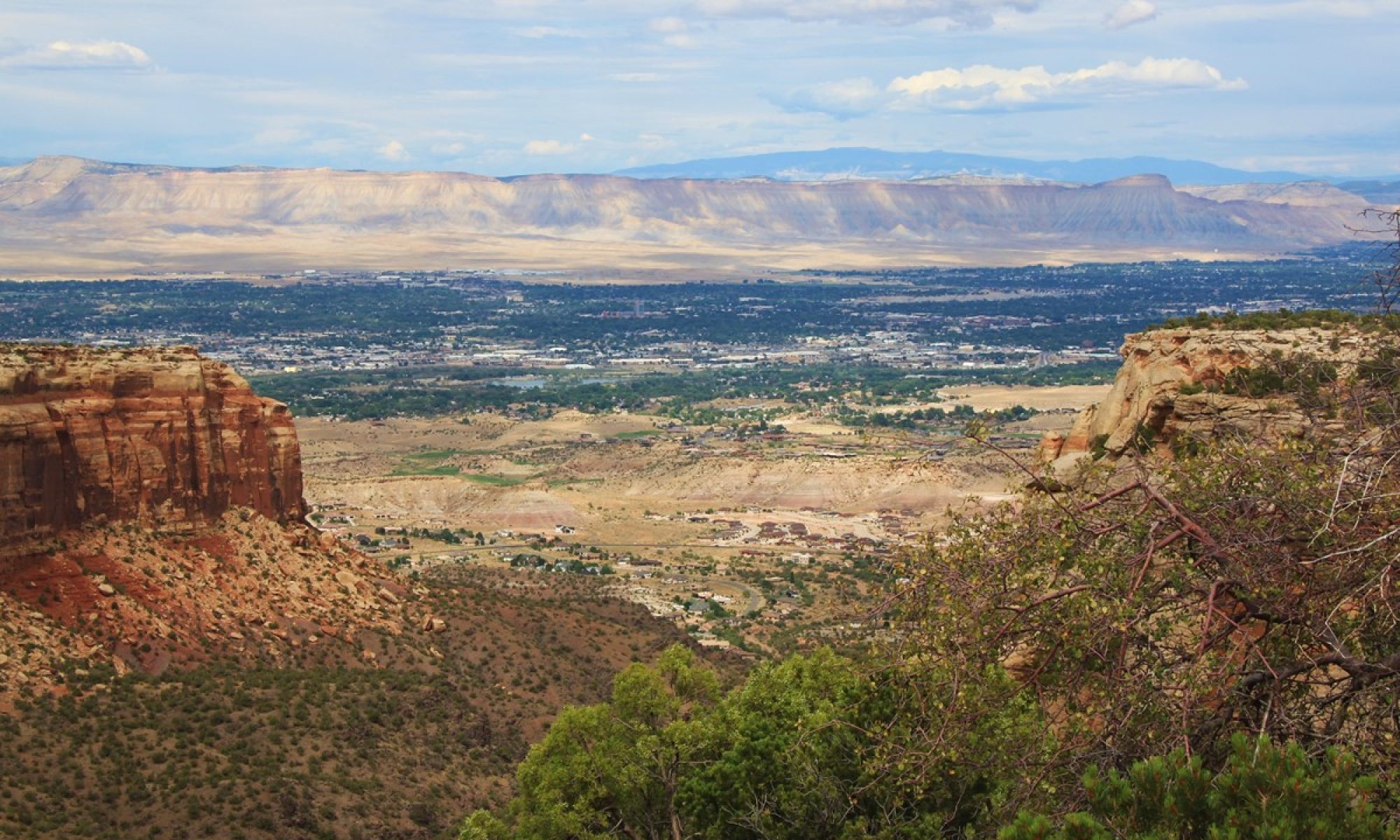January 2015
Mekong River, Cambodia
We will pick up our boat at the city of Kampong Cham, which is south of Siem Reap along the Mekong River at a 5-hour bus trip away.
However, along the way, we stopped to interact and visit with local residents, all of which who have their homes built up on stilts due to the annual flooding the area incurs (upwards of 8 meters high)!

The center of Cambodia is shaped much like a bowl, where Phnom Penh is located at the outlet which is the confluence of the southerly flowing Mekong River, and the Tonle Sap River which connects to the northwest to Cambodia’s great lake – the Tonle Sap. The Tonle Sap River is interesting as it flows water from the lake to the southeast into the Mekong River during dry season, but reverses its flow northward, swelling this great lake to 5 times its size during the monsoon season when the Mekong River (the world’s 12 longest river), is at its highest. Because of this, the area can support 2 rice crops per year, and 1.2 million people live along the lake’s shores. However, since the shores move so far, these locals are forced to move up to 10 times during the year, following the changing shoreline. Along the way, we also stop near Kampong Thom to observe the vast latex rubber plantations and extensive cassava crops.
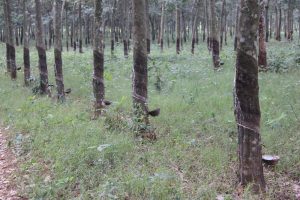
By afternoon, we arrive in Kampong Cham and board our boat along the muddy banks of the Mekong River. The “RV Mekong Navigator” is a new built ship for 67 guests, designed and built by the French in Ho Chi Minh City (Sai Gon), and it is spacious, luxurious and beautiful. We disembark and sail north up the Tonle Sap river as we settle into our rooms, have our “welcome aboard” dinner.
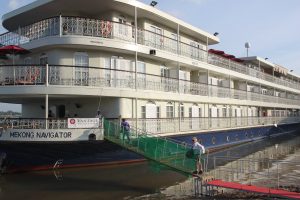
The next morning after breakfast onboard, we pull over to the bank in the town of Wat Hanchey (a town from the seventh century) where we are greeted by local children who have come to meet us.

After climbing a make-shift set of stairs up the bank, we walk along the road, visiting residents of the area, and arriving at a local secondary school full of polite, uniformed children, (grades 6-12). We have the opportunity to talk with the children, and to visit their classrooms where they are learning English, math and history. After the visit, we walk up the local hill to visit the town’s monastery and monks, and to receive the Buddhist Water Blessing. Here, the monks provide an education option for boys who are interested. They may join the monastery at 9-years old and stay or leave at any point in time. Their life is highly structured, but their education is excellent and their daily needs are met by the monks. As an option for families who cannot afford public school, (they must pay for books, uniforms and materials), monasteries across Indochina, serve an important option for many young people. In Cambodia 90% of the population is Buddhist.
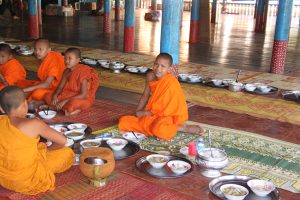
After boarding the boat, we have lunch and sail to Wat Nokor where we explore a 12th century remains of the ancient Khmer Empire (the Nokor Bachey Temple), hear the tales of horror from the Khmer Rouge times and learn more about the horrors of Pol Pot’s regime and watch a movie documenting the life of Pol Pot.
The next morning we continue to sail up the Tonle Sap River to the mouth of the lake and visit the town of Kampong Chhang. There we climb aboard a sampan boat and visit the floating villages that make up the region as the locals have learned to cope with the changing lake height and size by building their homes and villages on floating barges and migrating with the shoreline. Schools, markets, gas stations and churches are all interconnected and floating as most families catch and sell fish and raise vegetables. After returning to the boat, we have dinner on board the ship and watch the movie “Goodbye Vietnam”. That evening, we steam back downstream towards Phnom Penh.
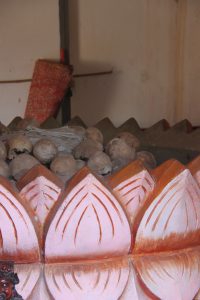
After sitting at anchor for the night, the ship resumes its journey to Phnom Penh the next morning. Upon arrival, we take up a position in the city dockside, exit the boat and each person boards a cyclo-taxi for a tour about town.
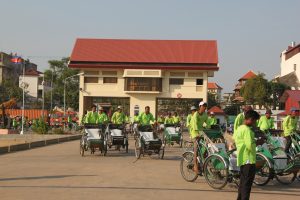
Our first stop is at the former Royal Palace where the modern Khmer King lived during the 18th-20th century French rule. The Palace is ornate and beautiful, and takes up a prominent place along the banks of the Mekong River. The temple on the palace grounds is the Silver Pagoda, a temple with a solid silver floor! We then travel a short distance to the National Museum, where artifact are displayed, and an active recovery of stolen artifacts from around the world is being pursued.
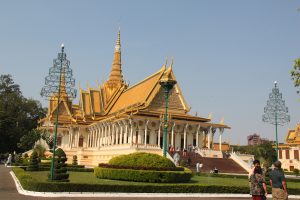
After lunch on board the ship, we venture out on our own to the local “central market” where hundreds of every possible item is for sale. After shopping for souvenirs and gifts, we return to the ship for a lecture on “Life along the Mekong”,
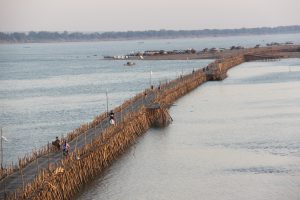
and a presentation onboard of Cambodian dance by a local children’s group. That night, we have a lobster dinner and a few nightcaps in the ship’s bar before retiring for the night.
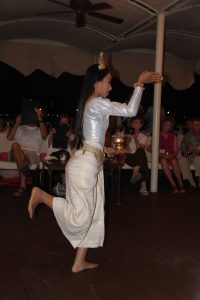
The next morning begins our last day in Phnom Penh, and after breakfast, we board buses to travel to Cambodia’s Genocide Museum and Killing Fields. At the Killing Fields, under Pol Pot and the Khmer Rouge, thousands of individuals were trucked to the site, killed and buried in mass graves. After 1998, the site was excavated recovering the remains of many individuals, some of whom are presented and displayed at the site’s monument.
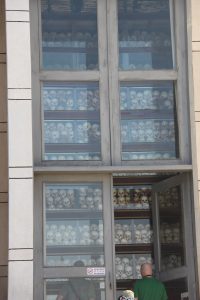
Today, walking around reveals emerging bones and clothes from the ground as the local rains wash down to unrecovered remains. We then traveled to the Internment Center (S-21 Prison) where the individuals were housed as prisoners for interrogation and determination as to disposition. The cells were constructed from the classroom of an old school, and when freed by the Vietnamese troops, only 7 prisoners had survived. By the end of Pol Pot’s regime, over 1/3 of the country’s population had died, including nearly all of its educated individuals. Only now, is Cambodia beginning to recover from this calamity. We returned back to the ship for dinner and a Vantage reception while leaving the dock and heading down-river along the Mekong towards South Vietnam.
